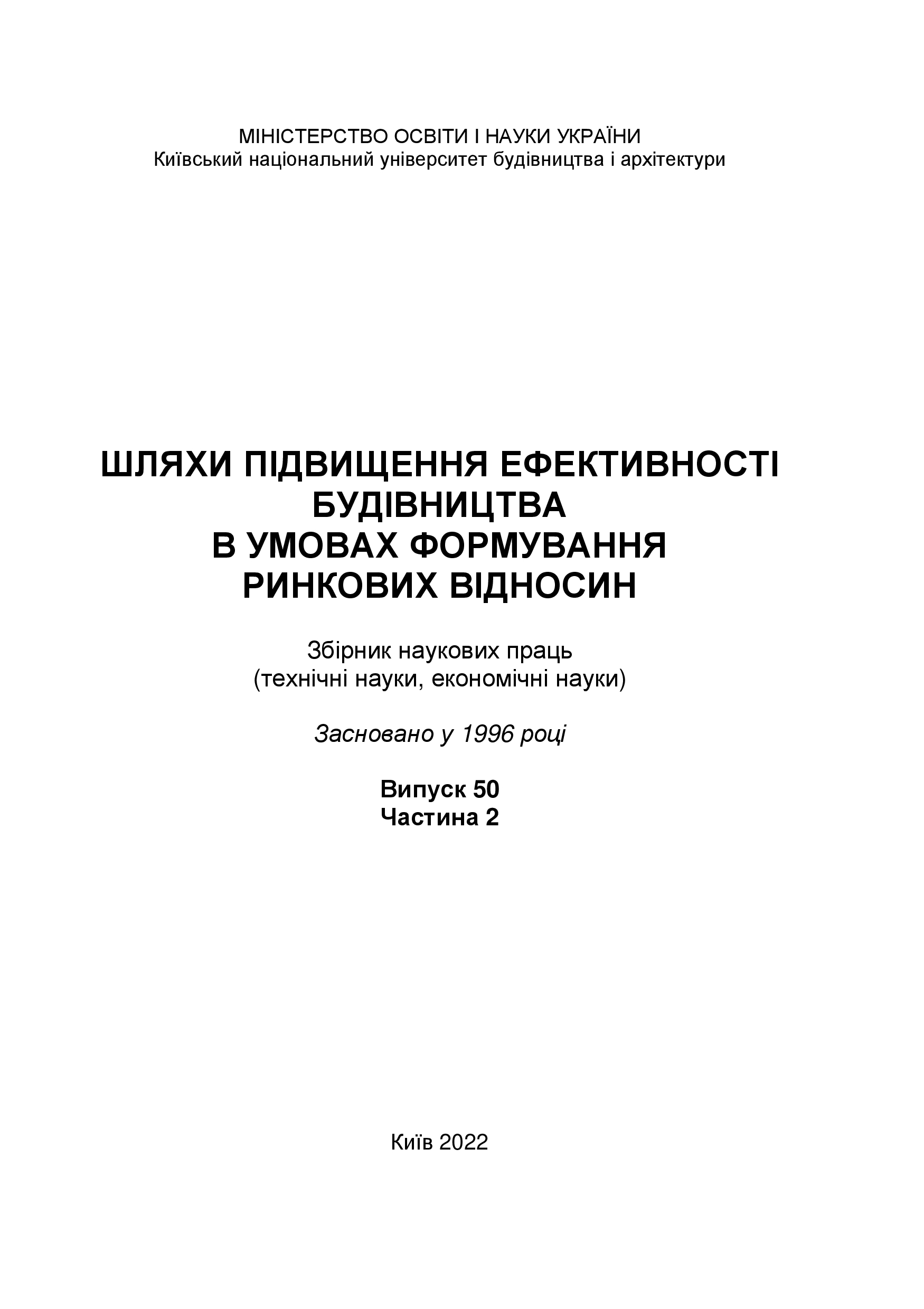Identification and classification of interested parties of the construction enterprise.
DOI:
https://doi.org/10.32347/2707-501x.2022.50(2).85-92Keywords:
stakeholders, stakeholder theory, identification, interests, resource-powerAbstract
According to theorists and practitioners, the main factor in the emergence of problems in relations with stakeholders is a lack of understanding of stakeholder management processes. In other words, it is a lack of management of stakeholders' expectations. First of all, this is due to the fact that, more often than not, there is a lack of understanding about which stakeholders surround the enterprise, what they want (their circle of interests), and what influence they can exert to achieve their own goals.
Identification and classification of interested parties is one of the foundations of the enterprise's management activities, aimed at minimizing the occurrence of conflict situations with individual stakeholders, as well as at protecting relations between partners, taking the desired place on the construction market, and obtaining a positive reputation. In turn, the idea of interested parties introduced into the enterprise's system of life creates certain values and features both for the enterprise and for the stakeholders themselves.
In the article, based on the study and analysis of literary sources, the concept of "interested parties" is defined, the main groups of stakeholders are formed, and the circles of interested parties specific to the construction industry are highlighted. Having identified these groups of interested parties in the future, there is an opportunity to understand their direct interests, expectations and influence on the enterprise, which will provide an opportunity to choose the development vector of the construction organization.
The theory of interested parties is considered, in which, according to the research of scientists, it is proposed to divide stakeholders into categories both according to their functional characteristics and to classify them depending on the interests and power they possess. A number of different criteria for the identification of stakeholders developed by Ukrainian and foreign experts, as well as those criteria based on the AA 1000 SES standard of interaction with interested parties, are proposed. The importance of identification and classification of stakeholders of the construction enterprise in order to take into account their characteristics and expectations is characterized and substantiated.
References
Посібник залучення стейкхолдерів до роботи парламентських комітетів. Серія видань «Парламентські практики». Київ 2021. С.7. Електронна версія видання — www.radaprogram.org.
Герасименко Ю.В. Ідентифікація стейкхолдерів підприємств та оцінка їхнього впливу: теоретичний аспект. Вісник Житомирського державного технологічного університету. Серія: Економіка, управління та адміністрування., 2019. №1 (87). С. 9-16.
Величко В.А. Розроблення заходів зростання ефективності взаємодії зі стейкхолдерами будівельних підприємств. Економічний простір, 2020. №154. С. 84-87.
Мирошниченко Ю.О. Модель взаємодії стейкхолдерів у реальному секторі економіки України в контексті КСВ. Східна Європа: економіка бізнес та управління».2018. Випуск 5(16). С. 71-74.
Гусєва Ю.Ю. Канцевіч М.В. Ідентифікація стейкхолдерів при плануванні проекту створення об’єднань співвласників багатоквартирних будинків. Комунальне господарство міст,2014. Випуск 118. С.52-55.
Смоленніков Д.О., Павленко Д.С., Костюченко Н.М. Вплив поведінки стейкхолдерів на прийняття рішень в управлінні інноваційними проектами. Вісник Сумського державного університету. Серія: Економіка. 2021. Випуск №4. С.182-196.
Ковалевська А.В., Зеленський С.В. Аналіз моделей оцінки стейкхолдерів: прикладні аспекти формування стратегії сталого розвитку міст України. Бізнесінформ. Серія «Менеджмент і маркетинг», 2019. №9. С. 299-307.
Сорокіна Л.В., Гойко А.Ф. Методичний підхід до оптимізації витрат будівельного підприємства в умовах невизначеності. Монографія. Економічний інструментарій управління фінансовою безпекою підприємств будівництва. КНУБА. Київ 2017. С. 294-302.
Страхов А.О., Паскар В.М., Стеценко С.П. Інстументарій економічної безпеки стейкхолдерів будівництва. Актуальні проблеми сучасного бізнесу: обліково-фінансовий та управлінський аспекти: матеріали IV Міжнародної науково-практичної інтернет-конференції, 22-23 березня 2022 р. Ч. 1. Львів: ЛНУП, 2022. С. 389 – 390.
Вершигора Д.М., Цифра Т.Ю. Розвиток маркетингу стейкхолдерів у девелоперських компаніях в умовах VUCA-світу. Архітектура та Будівництво: нові тенденції і технології. Теорія та практика: Міжнародний науково-технічний форум (26-27 жовтня 2021 р., м. Київ). Київ: Видавництво Ліра-К, 2021. С. 395
Подойніцин С.В. Стейкхолдери: інструмент ефективного управління будівельними підприємствами. Архітектура та Будівництво: нові тенденції і технології. Теорія та практика: Міжнародний науково-технічний форум (26-27 жовтня 2021 р., м. Київ). Київ: Видавництво Ліра-К, 2021. С. 450 – 451
Tugai O. A., Hryhorovskyi P. Ye., Khyzhniak V. O., … Chernyshev D.O. Organizational and technological, economic quality control aspects in the construction industry : collective monograph. Lviv-Toruń : Liha-Pres, 2019. 136 p.
Downloads
Published
How to Cite
Issue
Section
License

This work is licensed under a Creative Commons Attribution 4.0 International License.
Authors who publish with this journal agree to the following terms:
- Authors retain copyright and grant the journal right of first publication with the work simultaneously licensed under a Creative Commons Attribution License that allows others to share the work with an acknowledgement of the work's authorship and initial publication in this journal.
- Authors are able to enter into separate, additional contractual arrangements for the non-exclusive distribution of the journal's published version of the work (e.g., post it to an institutional repository or publish it in a book), with an acknowledgement of its initial publication in this journal.
- Authors are permitted and encouraged to post their work online (e.g., in institutional repositories or on their website) prior to and during the submission process, as it can lead to productive exchanges, as well as earlier and greater citation of published work (See The Effect of Open Access).

